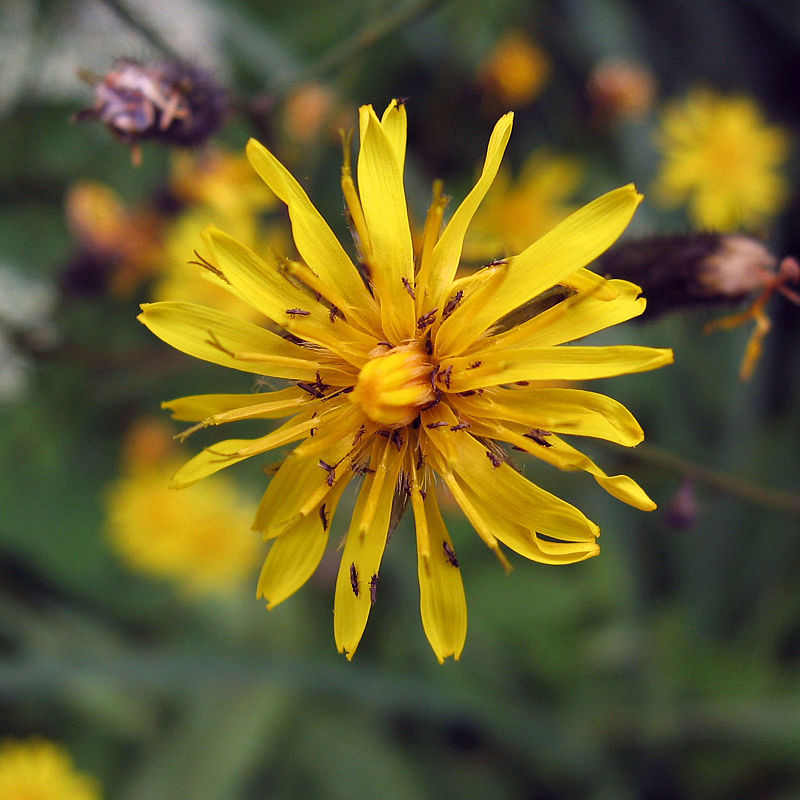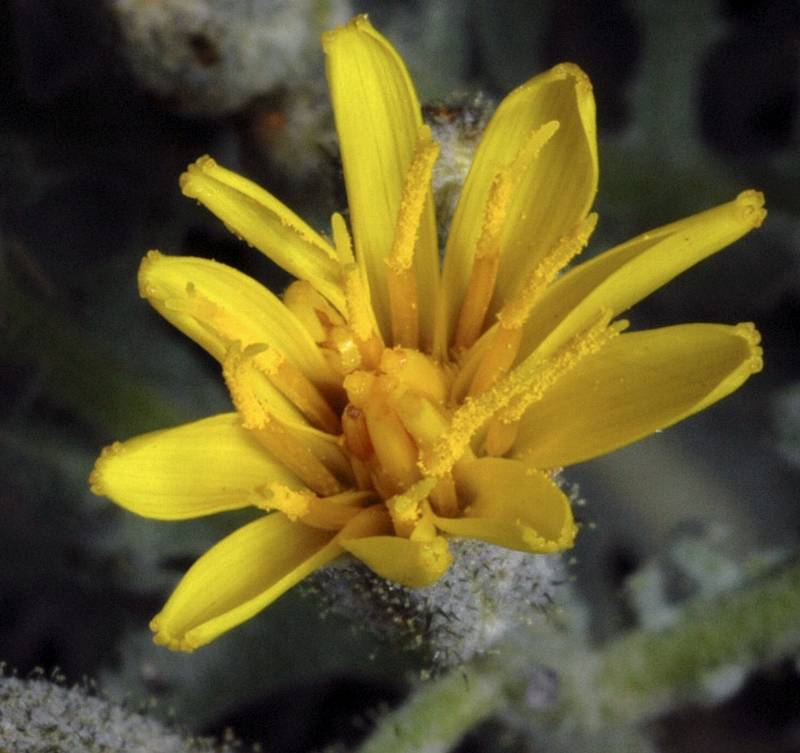Crepis tectorum
Crepis occidentalis
annual hawksbeard, narrow leaf hawksbeard, rooftop hawksbeard
western hawksbeard
Basal leaves petiolate, the blade lanceolate or oblanceolate, finely toothed to pinnately parted, up to 15 cm. long and 4 cm. wide; reduced cauline leaves sessile and auriculate, linear, often involute.
Lower leaves 1.5-3 dm. long, toothed with backward-pointing segments, to deeply pinnatifid with toothed lobes;
cauline leaves few and greatly reduced.
Heads several to numerous, 30-70 flowered;
involucre 6-9 mm. high, its inner bracts 12-15, with fine hairs and sometimes with stalked glands as well, the outer bracts about one-third as long;
corollas all ligulate, yellow.
Heads 2-25, 10-40 flowered;
involucre 11-19 mm. high, often with some black-tipped glandular bristles, the inner bracts 8-13, more than twice as long as the outer;
corollas all ligulate, yellow;
pappus of numerous capillary bristles.
Achenes 2.5-4.5 mm. long, dark reddish-brown, spindle-shaped, with 10 ribs.
Achenes spindle-shaped, brown.
Crepis tectorum
Crepis occidentalis
- Local floras:
BC,
CA,
OR,
WA
- Local Web sites:
CalFlora,
CalPhotos,
Flora NW,
PNW Herbaria
WildflowerSearch
iNaturalist (observations)
USDA Plants Database
- LBJ Wildflower Center
- SEINet
- Plants of the World Online
- Encyclopedia of Life
- Wikipedia
- Google Image Search
- Local floras:
BC,
CA,
OR,
WA
- Local Web sites:
CalFlora,
CalPhotos,
Flora NW,
PNW Herbaria,
Turner Photog.
WildflowerSearch
iNaturalist (observations)
USDA Plants Database
- LBJ Wildflower Center
- SEINet
- Plants of the World Online
- Encyclopedia of Life
- Wikipedia
- Google Image Search



